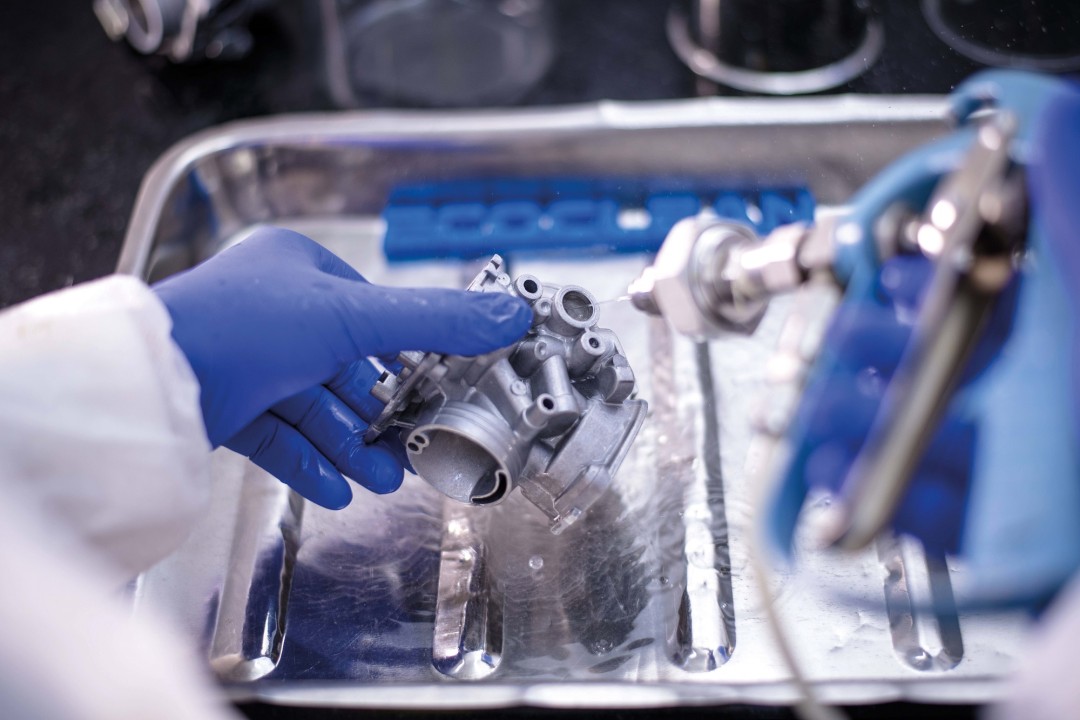
Keeping automotive parts in top condition is not just about regular maintenance and timely replacements. Cleaning plays a massive role in ensuring parts last longer and perform at their best. Aqueous cleaners have become the preferred choice for many mechanics and car enthusiasts because they are effective, safe, and environmentally friendly.
Unlike harsh chemical solvents, aqueous cleaners use water-based formulas to remove grease, oil, dirt, and other contaminants from metal and plastic components. This approach makes cleaning safer for workers and helps preserve the integrity of automotive parts.
The Science Behind Aqueous Cleaning
Aqueous cleaners rely on water, detergents, and additives that break down and lift contaminants from surfaces. These cleaners emulsify oils and greases, making them easy to rinse away without leaving harmful residues. The process is powerful enough to clean even the dirtiest automotive components but gentle enough to prevent corrosion or damage.
When using water based parts cleaning, the cleaner penetrates tight spaces and dissolves stubborn grime that can build up over time. This helps prevent wear and tear on parts like engine components, gears, and bearings. The result is a cleaner, smoother-running vehicle with parts that last longer.
The Problem with Traditional Cleaning Methods
Many automotive workshops relied on solvent-based cleaners before the rise of water-based parts cleaning. While these cleaners effectively removed grease and grime, they came with significant downsides. Solvents are often harsh, containing chemicals that can degrade materials over time. For example, when exposed to certain solvents, rubber seals and plastic components can become brittle and crack. Additionally, solvent-based cleaners pose health risks to workers and are harmful to the environment.
This is where water-based parts washer cleaning solutions step in as a safer, more sustainable alternative. Unlike solvents, aqueous cleaners use water as their primary ingredient, combined with biodegradable detergents and additives. This makes them gentler on parts, people, and the planet.
How Aqueous Cleaners Protect Automotive Parts
Automotive parts go through a lot. They are exposed to extreme heat, friction, moisture, and contaminants that can cause premature wear. If parts are not cleaned properly, debris and grease can build up, leading to inefficiencies and possible failures. Here’s how aqueous cleaners help:
- Prevents Corrosion – Many solvent-based cleaners strip protective coatings from metal parts, making them more prone to rust. Aqueous cleaners, especially those with corrosion inhibitors, remove contaminants without damaging protective layers.
- Reduces Friction and Wear—Dirt and grime act like sandpaper when trapped between moving parts. Regular cleaning with a water based parts washer cleaning solution ensures that components stay free of abrasive debris, reducing friction and prolonging their lifespan.
- Improves Heat Dissipation—Clean engine components and cooling system parts function better because no buildup blocks heat transfer. This keeps temperatures in check and prevents overheating.
- Maintains Proper Lubrication – Oil and grease are essential for many automotive parts, but old, dirty lubricants can turn into sludge. Cleaning parts before applying fresh lubrication ensures proper performance.
Aqueous Cleaning in Everyday Automotive Maintenance
Mechanics and DIY car enthusiasts use water-based parts cleaning solutions in many different applications. Be it working on a full engine rebuild or just cleaning individual components, the process is straightforward.
- Pre-Rinse or Soak – For heavily soiled parts, a quick rinse or soak loosens tough grime.
- Scrubbing or Agitation – Some washers use brushes, sprays, or ultrasonic technology to help dislodge contaminants.
- Rinse and Dry – Cleaned parts are rinsed with fresh water to remove any remaining cleaner and debris before drying thoroughly.
- Lubrication and Reassembly – Once clean, parts are relubricated and reinstalled to ensure smooth operation.
Many automotive shops have switched to aqueous cleaning because it is safer for workers and better for the environment. Unlike solvent-based cleaners that produce toxic fumes and require special disposal, aqueous cleaners are biodegradable and non-toxic.
Conclusion
Aqueous cleaning is one of the best ways to extend the lifespan of automotive parts. It removes harmful contaminants, prevents corrosion, and helps keep moving parts working smoothly. Using water-based parts cleaning regularly can make a huge difference in how long your vehicle’s components last.
Switching to an aqueous cleaning solution is smart for both professional mechanics and car owners who want to maintain their vehicles efficiently. It is safer and an investment in the long-term health of any car. Keeping parts clean means fewer repairs, better performance, and a longer-lasting vehicle.